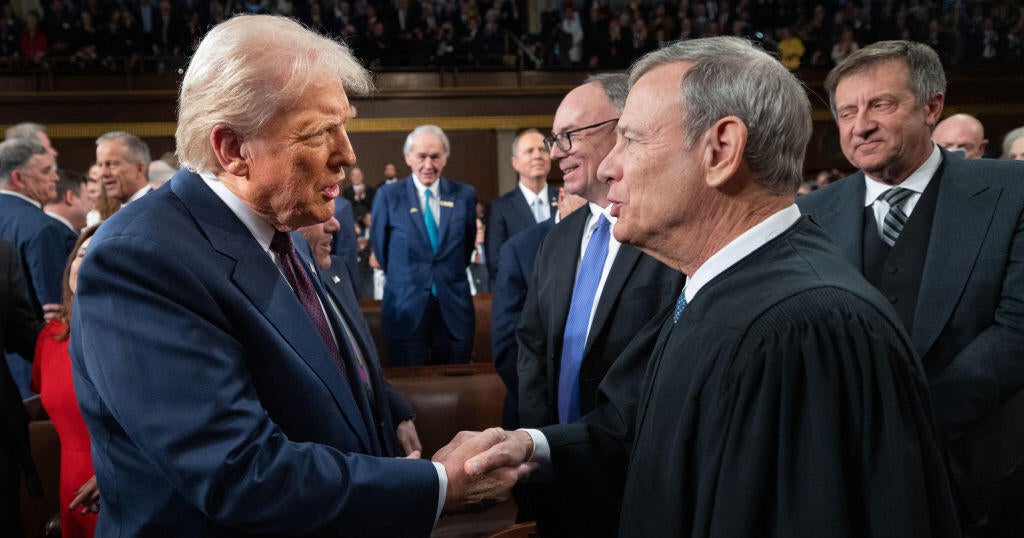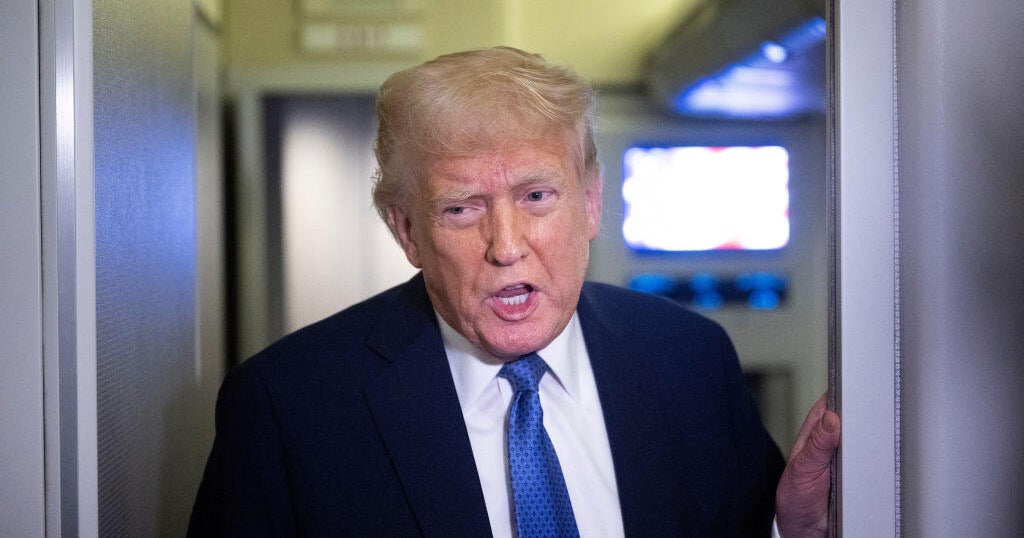"Unacceptable": Democrats sound alarm over unidentified law enforcement patrolling D.C. protests
Washington — The death of George Floyd in Minneapolis last week has drawn thousands of protesters to the streets of the nation's capital, leading President Trump to direct his administration to boost the number of federal law enforcement officers on the ground.
But photos of unidentified, armed officers donning face shields and protective gear standing guard near the White House have raised concerns among Democrats, who are warning that the dearth of insignia and identifying information could deny victims the ability to hold officers accountable if they engage in misconduct.
"This is unacceptable that you have armed uniformed security, with no identification," Senator Chris Murphy, a Democrat from Connecticut, told reporters on Capitol Hill. "It allows for really dangerous potential mischief. When things go wrong you need to be able to identify who it was that punched a reporter or took a club to a protester, and without identification, there's really no way to do real accountability."
Congressman Don Beyer, a Democrat from Virginia, also characterized the presence of the unidentified officers as "unacceptable," and said he is drafting legislation to address the issue.
"Unacceptable for uniformed federal officers policing constitutionally-protected assemblies to refuse to identify themselves to people who pay their salaries," Beyer tweeted Wednesday. "Denying accountability to the public they serve ensures abuses."
Federal and state leaders have ramped up law enforcement presence on city streets as protests against police brutality have erupted nationwide. In the nation's capital, roughly 1,200 members of the D.C. National Guard were mobilized and another 3,300 National Guard soldiers and airmen from 10 other states are supporting the efforts. An additional 1,600 active duty troops at bases in the Washington, D.C., region are poised to assist, as more demonstrations are expected Saturday and Sunday.
The protests have largely been peaceful, but tensions earlier this week escalated in Washington after nightfall, leading to clashes between demonstrators and police, and vandalism and destruction of property. On Sunday night, a fire broke out at a parish office of the historic St. John's Church located across from the White House and graffiti was sprayed on statues and monuments around the city.
On Monday, Mr. Trump vowed to deploy the U.S. military to states to respond to protesters and also directed Attorney General William Barr to spearhead federal law enforcement efforts to help with the response to protests in Washington. Justice Department spokeswoman Kerri Kupec said Monday all of the department's law enforcement components, which includes the FBI, Drug Enforcement Administration, U.S. Marshals, Bureau of Prisons and Bureau of Alcohol, Tobacco and Firearms, were deployed.
On Tuesday, Barr said "there will be even greater law enforcement resources and support" in the Washington, D.C., region.
While the officers photographed on streets outside the White House did not have their affiliation clearly displayed, patches sewn on their shirts match those worn by Bureau of Prisons units.
The bureau said in a statement that it, "like other federal, state, and local LEOs may be deputized under the authority granted the USMS to enforce federal criminal statutes and protect federal property and personnel. The BOP Crisis Management teams do carry badges and are not wearing BOP specific clothing as they are serving a broader mission."
A senior U.S. official said that teams from federal agencies were brought to the D.C. area in a hurry, and some do not have traditional identifiers. The official said that they will identify themselves in a "custodial" situation, that is, if they detain individuals.
A Justice Department official said officers have not been directed to conceal their home agency, but added that it's normal practice among law enforcement not to engage.
During a press conference at the Justice Department on Thursday, Barr said the Bureau of Prison's Special Operations Response Teams are "used frequently" for emergency response in either civil disturbances or natural disasters, and noted that federal law enforcement agents don't typically wear badges with their names.
"I could understand why some of these individuals simply wouldn't want to talk to people about who they are if that in fact was the case," he said.
Federal Bureau of Prisons Director Michael Carvajal said he did not know of specific personnel in the bureau being told not to identify themselves to members of the press and public, as has been reported, but said he "probably should have done a better job" of equipping officers with identification.
"What I attribute that to is probably the fact that we normally operate within the confines of our institution and we don't need to identify ourselves," he said. "Most of our identification is institution-specific and probably wouldn't mean a whole lot to people in D.C. I probably should have done a better job of marking them nationally as the agency. Point is well taken. But I assure you that nobody was specifically told, to my knowledge, not to identify themselves."
Stefan Becket, Alan He, Clare Hymes, Andres Triay and David Martin contributed to this report.



